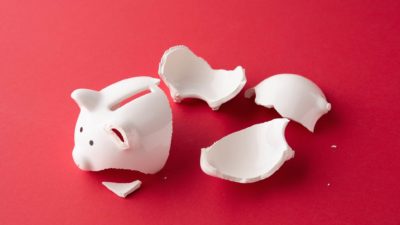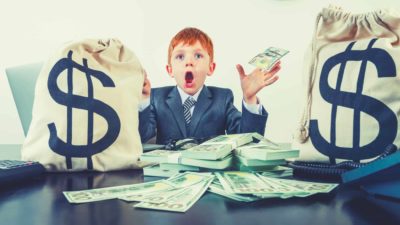Funding your lifestyle via your investments is the dream for many people. To be able to live off your returns without diminishing your capital means you are self sustaining. It gives you the freedom to choose your work and live life the way you want to. Building a portfolio capable of supporting your lifestyle is entirely possible with sufficient dividend income. So how do you live off dividends alone?
According to the government, a single person (who owns their own home) needs $42,764 a year to live a comfortable retired lifestyle, while a couple needs $60,264. Make some adjustments for your own personal circumstances and you'll have a rough figure for how much life will cost you. Now you just need sufficient dividends to fund this.
The dividend downlow
Buying shares buys you the right to a stream of future income flows in the form of company profits. Dividends are payments of company profits to the owners of the company, shareholders. Not all companies pay dividends. Some may not yet be profitable. Others may retain profits to fuel future growth.
Larger, more mature companies are more likely to pay out a larger proportion of their profits as dividends. A company's payout ratio refers to the proportion of net earnings that the company pays out as dividends. Companies in industries with steady and foreseeable cash flows such as utilities and telecommunications tend to have higher payout ratios. Those in cyclical industries or with unpredictable cash flows are less able to support high payout ratios.
Some companies aim to meet a certain payout ratios: AGL Energy Limited (ASX: AGL) has a target payout ratio of 75%, while Coles Group Ltd (ASX: COL) has a target payout ratio of 80–90%. Another important metric for dividend investing is the dividend yield. The dividend yield is a company's annual dividend divided by its share price.
The dividend yield is a percentage which represents the dividend only return for buying a share. Yields are generally lower for faster growing companies and higher for more mature, lower growth companies. Yields are not, however, static, and may appear attractively high due to a falling share price. Dividends can also be cut, as was witnessed this year with Westpac Banking Corp (ASX: WBC) and National Australia Bank Ltd (ASX: NAB).
How do I get sufficient dividends?
How many shares you'll need to get paid say $50,000 in dividends per year will depend on the shares you hold. Westpac declared dividends of $1.74 per share in 2019. You would need to own 28,735 shares worth $741,000 at today's prices to earn $50,000 per year. Westpac shares were, however, fully franked so you would also get the benefit of the tax credits.
If you chose to hold WiseTech Global Ltd (ASX: WTC) shares instead, you would need to hold a lot more shares. WiseTech has a target payout ratio of up to 20% of net profits after tax (NPAT). WiseTech declared dividends of 2.45 cents per share in 2019. You would need to own 2,040,816 shares worth $53,600,000 at today's prices to earn $50,000 per year. You would, however, get the benefits of 30% franking.
Of course, you don't want to be reliant on just one company for all your dividend income. The lack of diversification involved in this strategy means it is high risk. It is preferable to build a portfolio of dividend paying stocks across a number of industries and sectors. This way if there is a downturn in one or two markets your portfolio won't be too badly affected.
Dividend ETFs
For easy diversification, exchange traded funds (ETFs) can be used. ETFs can be traded on the ASX like a share but they give the holder an interest in a basket of underlying securities. There are a number of ETFs that focus on dividend paying shares and make distributions investors.
The iShares S&P/ASX Dividend Opportunities (ASX: IHD) provides investors with exposure to 50 ASX-listed stocks with high dividend yields which also meet tradeability, diversification, and stability requirements. The fund tracks the S&P/ASX Dividend Opportunities Accumulation Index before fees and expenses. Returns were 16.47% in the year to the end of October and the fund has a 12-month trailing yield of 6.59%.
Management fees are 0.30% per annum and distributions are made quarterly. Top holdings include Wesfarmers Ltd (ASX: WES), Westpac, Commonwealth Bank of Australia (ASX: CBA), Woodside Petroleum Limited (ASX: WPL), Rio Tinto Limited (ASX: RIO), BHP Group Ltd (ASX: BHP), and AGL Energy.
The Vanguard Australian Shares High Yield ETF (ASX: VHY) tracks the FTSE Australia High Dividend Yield Index before fees, expenses and tax. No more than 40% of the ETF is invested in any one industry and no more than 10% in any one company. The fund returned 16.41% in the year to the end of October.
Management fees are 0.25% per annum and distributions are made quarterly. The fund holds 60 Australian shares and has a dividend yield of 5.4%.Top holdings include CommBank, BHP, Westpac, NAB, Australia and New Zealand Banking Group (ASX: ANZ), Wesfarmers Ltd (ASX: WES), and Telstra Corporation Ltd (ASX: TLS).
Reinvesting dividends
While you're in the accumulation phase, i.e. building your wealth as opposed to living off it, you should strongly consider reinvesting your dividends. By reapplying your dividends to your portfolio rather than spending them, you will build the overall size of your portfolio more rapidly and benefit from compounding returns.
Compounding returns occur when you earn a return on your previous returns. So if you reinvest your dividends now, in future you will earn returns on both your principal and your reinvested dividends. This allows for greater returns over time and contributes to a larger eventual portfolio.
Foolish takeaway
Funding your lifestyle through dividends is entirely possible. After all, it is what many people plan to do in retirement. The key is to invest early and well, and to reinvest dividends in the accumulation phase to allow gains to compound.








